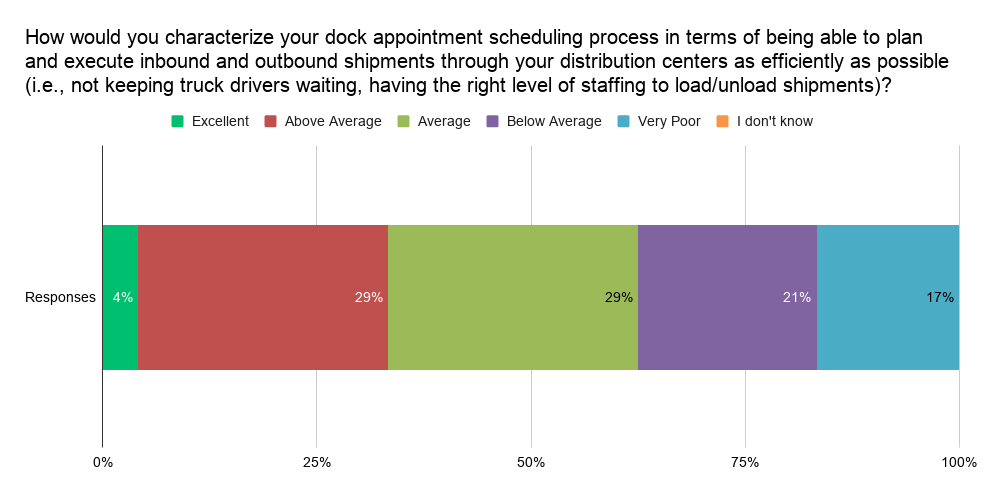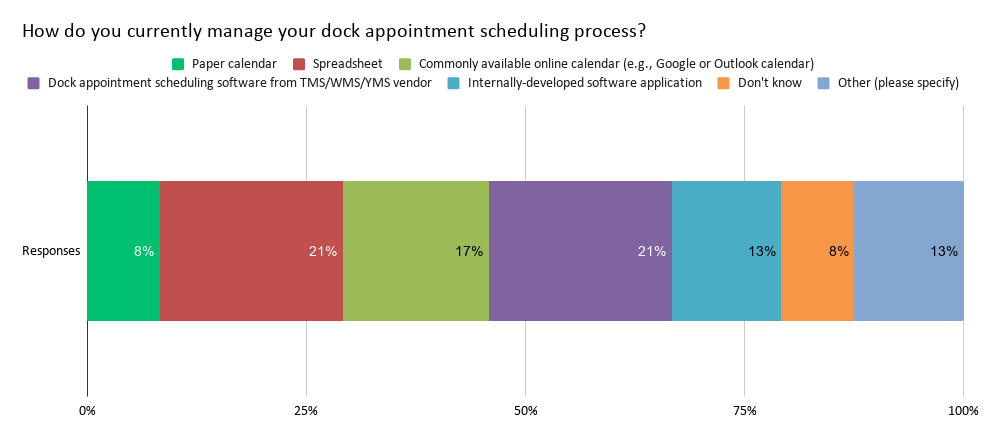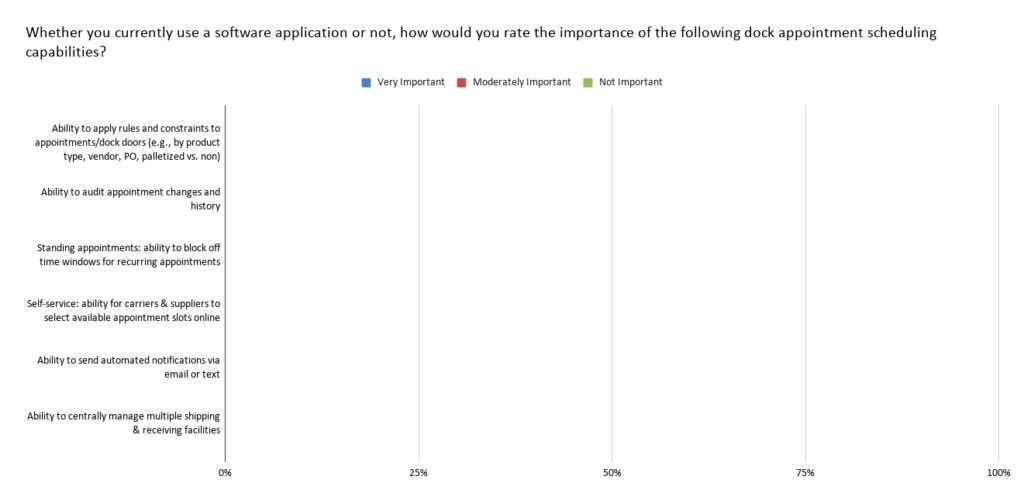How would you characterize your dock appointment scheduling process in terms of being able to plan and execute inbound and outbound shipments through your distribution centers as efficiently as possible?
We asked our Indago members that question a few months ago. Only 4% of our member respondents characterized their dock appointment scheduling process as “Excellent,” while 38% said it was “Below Average” or “Very Poor.”

Part of the problem may be that relatively few of our members (21%) are using dock appointment scheduling software from a TMS, WMS, or YMS vendor. An equal percentage (21%) are using spreadsheets, with others using paper calendars (8%) and commonly available online calendars like Google Calendar (17%).

“I definitely think [dock appointment scheduling] is something my company can [improve] upon,” said one supply chain executive. “We kind of just hope for the best which isn’t the best way to do it.”
Another executive highlighted the value of using best-of-breed software based on prior experience: “Our current structure (low volume, two facility operation) does not support investment in dock scheduling technology. However, having had personal prior experience with that set-up at another company, it is quite unfortunate and missed when you do not have it currently.”
Here are some other value-added comments from our Indago members, who are all supply chain and logistics professionals from manufacturing, retail, and distribution companies:
“This is an often overlooked, yet critical piece within the supply chain. The best TMS and/or WMS system falls down when there isn’t a good yard management or dock scheduling tool/module. This pinch point often results in significant costs related to detention and, ultimately, higher freight rates.”
“This was a game changer when we implemented it. [Our facility] went from FCFS [first come, first serve] to ‘by appointment’. We increased productivity by being able to stage early appointment loads. We also improved the flow of trucks. When we were FCFS, most of the trucks would show up between noon and 3PM, putting a crunch during that window of time, which led to long wait times, misloaded products, and overall reduced warehouse efficiencies.”
“Currently, all of our facilities use an in-house developed Access database for dock scheduling. To have this integrated with WMS and TMS would be a great improvement.”
“Dock appointments can provide visibility into inbound loads not possible with managing just by ‘PO Due’ dates. Still, customer demand and the inbound purchasing flow rightly dictate truck (product) arrival, so it’s not always possible to optimize the dock as much as the system might allow.”
We also asked our Indago members to rank the importance of various dock appointment scheduling capabilities; those results are available to Indago members only.

What’s your experience or perspective related to dock appointment scheduling? Post a comment and let us know!
Join Indago
Also, If you’re a supply chain or logistics practitioner from a manufacturing, retail, or distribution company, I encourage you to learn more about Indago and join our research community. It is confidential, there is no cost to join and the time commitment is minimal (2-5 minutes per week) — plus your participation will help support charitable causes like JDRF, American Logistics Aid Network, American Cancer Society, Feeding America, and Make-A-Wish.
You can also follow us on LinkedIn to stay informed of our latest research results and news.










